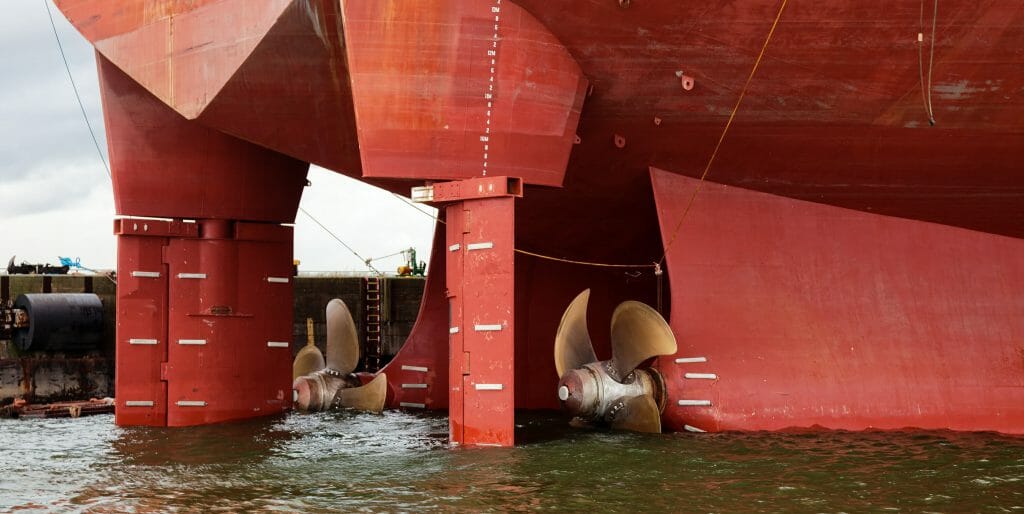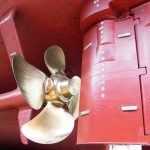The rudder is used to steer the ship. The turning action is largely dependent on the area of the rudder. The required area of the rudder varies with different type of vessels since desired maneuvering ability differs considerably and the general ship design may imposed restriction.
In practice the rudder area is usually relative to the area of the immersed metal plane. The ratio of the depth to width of a rudder is known as the aspect ratio and its value is generally 2. High aspect ratio is used in large vessels, where depth is not a constraint. Higher aspect ratio reduces the astern torque considerably.
Aspect Ratio = (Depth of Rudder / Width of Rudder)
The force on the rudder depend on:
1. Area of the rudder
2. The form of rudder
3. The speed of the ship
4. The angle of helm
Force acting on the rudder, F = k A V²
where,
k = Constant depending upon the shape of the rudder, water density, rudder angle. It varies from 570 to 610.
A = Area of rudder in m²
V = Speed of ship in m/s
F acts at a point M, measured from the leading edge of the rudder (where water flow first touches rudder).
M = (0.195 + 0.305 sinθ ) L
where,
θ = Turning angle of rudder
L = Width of the rudder
Area of rudder is 1/60 to 1/70 th of the immersed middle plane area of the vessel. Faster vessels require less rudder area.
Rudder may be hinged on the pintles and gudgeons, or the may turn about an axle which passes down through the rudder. The weight of rudder may be taken by bearing pintles, or by a bearing at the rudder head (rudder carrier), or by a combination of both.



Comments are closed